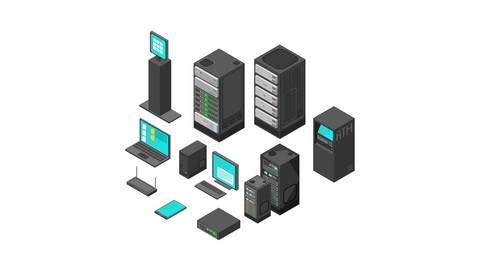
sql server tutorial
sql server tutorial, available at $64.99, has an average rating of 4.55, with 21 lectures, based on 137 reviews, and has 4017 subscribers.
You will learn about SQL Server installation, creating entities like database , tables , rows and columns. Covers fundamentals like primary key,foreign key , referential integrity , constraints , normalization ( first , second and third normal forms), Denormalization,OLTP , OLAP, StarSchema and SnowFlake design. Writing DML and DDL query like inner join,left join,right join, outer join, union , co-related queries, union all, alias,case statements,cartesian,ISNULL, aggregate( sum/count),wild card , top, order by, create , insert, bulk insert , update , backup , restore,ISNULL,Coalesce,Row_Number, Partition, Rank ,DenseRank , Pivot and Unpivot. Understanding importance of indexes , how it makes our search faster , non-clustered indexes vs clustered indexes , page splits in indexes and column store indexes. Triggers,Insteadof , After trigger ,Inserted , deleted tables ,Stored Procedures,CDC,8 KB page and SQL Server agent. This course is ideal for individuals who are Developers who want to become SQL Server developers It is particularly useful for Developers who want to become SQL Server developers.
Enroll now: sql server tutorial
Summary
Title: sql server tutorial
Price: $64.99
Average Rating: 4.55
Number of Lectures: 21
Number of Published Lectures: 21
Number of Curriculum Items: 21
Number of Published Curriculum Objects: 21
Original Price: $19.99
Quality Status: approved
Status: Live
What You Will Learn
- SQL Server installation, creating entities like database , tables , rows and columns. Covers fundamentals like primary key,foreign key , referential integrity , constraints , normalization ( first , second and third normal forms), Denormalization,OLTP , OLAP, StarSchema and SnowFlake design.
- Writing DML and DDL query like inner join,left join,right join, outer join, union , co-related queries, union all, alias,case statements,cartesian,ISNULL, aggregate( sum/count),wild card , top, order by, create , insert, bulk insert , update , backup , restore,ISNULL,Coalesce,Row_Number, Partition, Rank ,DenseRank , Pivot and Unpivot.
- Understanding importance of indexes , how it makes our search faster , non-clustered indexes vs clustered indexes , page splits in indexes and column store indexes.
- Triggers,Insteadof , After trigger ,Inserted , deleted tables ,Stored Procedures,CDC,8 KB page and SQL Server agent.
Who Should Attend
- Developers who want to become SQL Server developers
Target Audiences
- Developers who want to become SQL Server developers
It has 21 labs which covers the below syllabus.
Lab 1:- Basic Fundamentals Database, Tables, rows and columns.
Lab 2:- Primary key, foreign key, referential integrity and constraints.
Lab 3 :- Database Normalization (1st, 2nd and 3rd normal forms).
Lab 4: – SQL basics(Select, Insert, Update and Delete)
Lab 5 :- DDL (Data definition language) Queries.
Lab 6: – Transactions, Locks and Isolation level in SQL Server.
Lab 7: – ISNULL and Coalesce functions.
Lab 8: – Row_Number, Partition, Rank and DenseRank
Lab 9: – Triggers, inserted and deleted tables
Lab 10: – Instead of and after triggers.
Lab 11: – Denormalization, OLTP and OLAP.
Lab 12: – Understanding Star schema and Snow flake design.
Lab 13: – SQL Server 8 kb pages.
Lab 14 :- Index and performances
Lab 15 :- Page Split and indexes
Lab 16 :- Clustered vs non-clustered
Lab 17: – Stored procedures and their importance.
Lab 18: – Change Data Capture.
Lab 19: – Explain Columnstore Indexes?
Lab 20: – SQL Server agent
Lab 21: – How can we implement Pivot & Unpivot in SQL Server?
Course Curriculum
Chapter 1: Lab1 :- Basic fundamentals Database, Tables, rows and columns
Lecture 1: Lab1 :- Basic fundamentals Database, Tables, rows and columns
Chapter 2: Lab2 :- Primary key, foreign key, referential integrity and constraints
Lecture 1: Lab2 :- Primary key, foreign key, referential integrity and constraints
Chapter 3: Lab3 :- (Database normalization) First , Second and Third normal form
Lecture 1: Lab3 :- (Database normalization) First , Second and Third normal form
Chapter 4: Lab 4: – SQL basics(Select, Insert, Update and Delete)
Lecture 1: Lab 4: – SQL basics(Select, Insert, Update and Delete)
Chapter 5: Lab 5:- SQL Server
Lecture 1: Lab 5:- DDL ( Data definition language) Queries
Chapter 6: Lab 6: – Transactions, Locks and Isolation level in SQL Server.
Lecture 1: Lab 6: – Transactions, Locks and Isolation level in SQL Server.
Chapter 7: Lab 7: – ISNULL and Coalesce functions.
Lecture 1: Lab 7:- ISNULL and Coalesce functions
Chapter 8: Lab 8:- Row_Number, Partition, Rank and DenseRank
Lecture 1: Lab 8:- Row_Number, Partition, Rank and DenseRank
Chapter 9: Lab 9:- Triggers, inserted and deleted tables
Lecture 1: Lab 9:- Triggers, inserted and deleted tables
Chapter 10: Lab 10:- Instead of and after triggers.
Lecture 1: Lab 10:- Instead of and after triggers.
Chapter 11: Lab 11:- Denormalization, OLTP and OLAP
Lecture 1: Lab 11:- Denormalization, OLTP and OLAP
Chapter 12: Lab 12:- Understanding Star schema and Snow flake design.
Lecture 1: Lab 12:- Understanding Star schema and Snow flake design.
Chapter 13: Lab 13:- SQL Server 8 kb pages.
Lecture 1: Lab 13:- SQL Server 8 kb pages.
Chapter 14: Lab 14:- Index and performances
Lecture 1: Lab 14:- Index and performances
Chapter 15: Lab 15:- Page Split and indexes
Lecture 1: Lab 15:- Page Split and indexes
Chapter 16: Lab 16:- Clustered vs non-clustered
Lecture 1: Lab 16:- Clustered vs non-clustered
Chapter 17: Lab 17:- Stored procedures and their importance.
Lecture 1: Lab 17:- Stored procedures and their importance.
Chapter 18: Lab 18:- Change Data Capture.
Lecture 1: Lab 18:- Change Data Capture.
Chapter 19: Lab 19:- Explain Columnstore Indexes?
Lecture 1: Lab 19:- Explain Columnstore Indexes?
Chapter 20: Lab 20:- SQL Server agent
Lecture 1: Lab 20:- SQL Server agent
Chapter 21: Lab 21:- SQL Server agent
Lecture 1: Lab 21:- How can we implement Pivot & Unpivot in SQL Server?
Instructors
-
Shivprasad Koirala
We love recording Step by Step tutorials
Rating Distribution
- 1 stars: 1 votes
- 2 stars: 3 votes
- 3 stars: 17 votes
- 4 stars: 48 votes
- 5 stars: 68 votes
Frequently Asked Questions
How long do I have access to the course materials?
You can view and review the lecture materials indefinitely, like an on-demand channel.
Can I take my courses with me wherever I go?
Definitely! If you have an internet connection, courses on Udemy are available on any device at any time. If you don’t have an internet connection, some instructors also let their students download course lectures. That’s up to the instructor though, so make sure you get on their good side!
You may also like
- Top 10 Video Editing Courses to Learn in November 2024
- Top 10 Music Production Courses to Learn in November 2024
- Top 10 Animation Courses to Learn in November 2024
- Top 10 Digital Illustration Courses to Learn in November 2024
- Top 10 Renewable Energy Courses to Learn in November 2024
- Top 10 Sustainable Living Courses to Learn in November 2024
- Top 10 Ethical AI Courses to Learn in November 2024
- Top 10 Cybersecurity Fundamentals Courses to Learn in November 2024
- Top 10 Smart Home Technology Courses to Learn in November 2024
- Top 10 Holistic Health Courses to Learn in November 2024
- Top 10 Nutrition And Diet Planning Courses to Learn in November 2024
- Top 10 Yoga Instruction Courses to Learn in November 2024
- Top 10 Stress Management Courses to Learn in November 2024
- Top 10 Mindfulness Meditation Courses to Learn in November 2024
- Top 10 Life Coaching Courses to Learn in November 2024
- Top 10 Career Development Courses to Learn in November 2024
- Top 10 Relationship Building Courses to Learn in November 2024
- Top 10 Parenting Skills Courses to Learn in November 2024
- Top 10 Home Improvement Courses to Learn in November 2024
- Top 10 Gardening Courses to Learn in November 2024






















